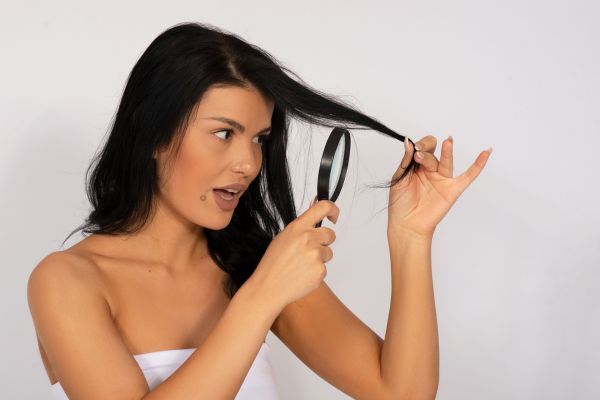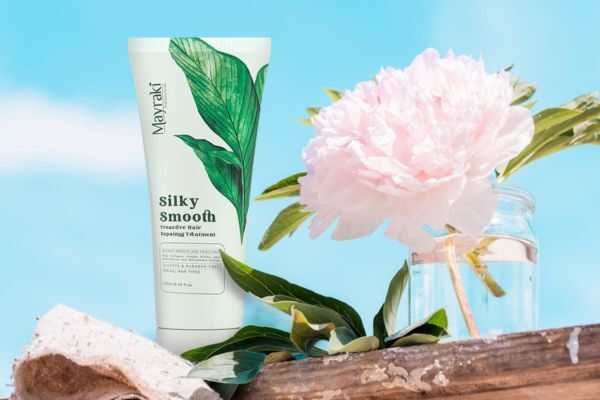How to Transition from Relaxed to Natural Hair Safely: A Gentle, Proven Approach
May 28, 2025 | By Maria Eliza Pineda

Many women have started embracing their natural hair, and there are many reasons why they have chosen this path. Going natural is a step towards healthier hair and a way to restore the health and strength of hair damaged by chemicals. For those looking to transition from relaxed hair to natural, there are proper steps to follow to maintain hair health. In this article, we’ll discuss how to safely and effectively make the transition without resorting to the big chop, and how natural products can assist you on your journey.
Why Many Are Embracing Their Natural Hair
While relaxers and chemicals often provide instant results in straightening hair, the long-term effects can be damaging. Having healthy natural hair is a step towards self-care and being true to our natural look. Additionally, chemicals in relaxers often lead to dry, brittle, and easily breakable hair. Therefore, the idea of natural hair, which is lower in chemicals and more attractive to those seeking a safer and more natural way of hair care, is gaining traction.
What Does Transitioning Mean?
Transitioning from relaxed hair to natural means allowing the natural texture of your hair to grow out while gradually trimming off the relaxed ends. In most cases, the transition process takes anywhere from 6 months to 2 years, depending on your goals and hair maintenance. You can choose to transition gradually, or you may opt for the big chop, where all the relaxed hair is removed at once. However, for those who prefer not to do the big chop, it’s possible to transition gradually by letting your natural hair grow while trimming the relaxed sections little by little. One of the most challenging aspects of transitioning is the “line of demarcation,” where the natural and relaxed hair meet. This area is prone to breakage, which is why proper care is essential for this part of your hair.
Step-by-Step Transition Guide

Start with a Hair Health Assessment
The first step in any transition is assessing the current health of your hair. Determine the extent of the damage and the type of hair you have—whether it’s dry, brittle, or damaged. This will help you identify the best products to use to improve your hair health.
Moisturize and Deep Condition Weekly
Maintaining the right moisture and protein balance is key to keeping your hair healthy during the transition. Avoid products that dry out your hair and make sure to deep condition weekly. This will help improve your hair’s elasticity and maintain your natural curl pattern.
Use Sulfate-Free, Gentle Cleansers
Shampoos containing sulfates can be harsh and often dry out the hair. It’s important to use sulfate-free shampoos to avoid stripping the natural oils from your hair. Focus on mild and gentle cleansers that help retain your hair’s hydration.
Minimize Breakage with Low-Manipulation Styles
Low-manipulation styles like braids, buns, and twist-outs help reduce breakage and protect your hair. Avoid overly tight styles that put pressure on the roots of your hair, such as tight ponytails or braids.
Gradual Trimming of Relaxed Ends
Regular trimming is important to remove damaged or relaxed ends. You don’t need to trim frequently, but it’s essential to remove them at the right time to avoid breakage at the line of demarcation.
Detangle with Caution
Detangling is a delicate part of the transition process, so it’s crucial to use soft tools and conditioners. Detangling should be done carefully to prevent hair breakage, and you should use moisturizing conditioners that help smooth and soften the hair.
Avoid Excessive Heat
While transitioning, avoid excessive use of heat styling tools like blow dryers and flat irons. Heat can cause damage to your hair, so use heat protectant sprays if necessary and limit heat styling as much as possible.
Understand and Care for Your Hair’s Porosity
Hair porosity refers to how well your hair absorbs moisture. Knowing your hair’s porosity will help you select the right products. If your hair has high porosity, it loses moisture easily, so it needs extra hydration.
Common Challenges During the Transition
During the transition, you may face challenges such as managing two different textures, shedding, and breakage. Caring for the line of demarcation and using the right products will help maintain the health of your hair. Product buildup can also become an issue, so regular co-washing or using clarifying shampoos will help remove residues.
How Mayraki Professional Helps

Mayraki Professional products, particularly from the Mayraki Silky Smooth Proactive Hair Repairing Treatment, provide the right nourishment and repair for your hair. Ingredients like collagen amino acids and aloe vera help strengthen your hair and prevent breakage. Created and specially formulated to speed up hair recovery and avoid further damage.
The Transition Is Worth It!
Transitioning from relaxed to natural hair is a journey that requires patience, dedication, and proper care. It’s not an easy process, but with the right steps and the use of natural, damage-repairing products like the Mayraki Silky Smooth Proactive Hair Repairing Treatment, you can succeed and enjoy healthier, natural hair. Don’t forget to take it slow at every step, and continue to support your hair with careful planning and the right care.




